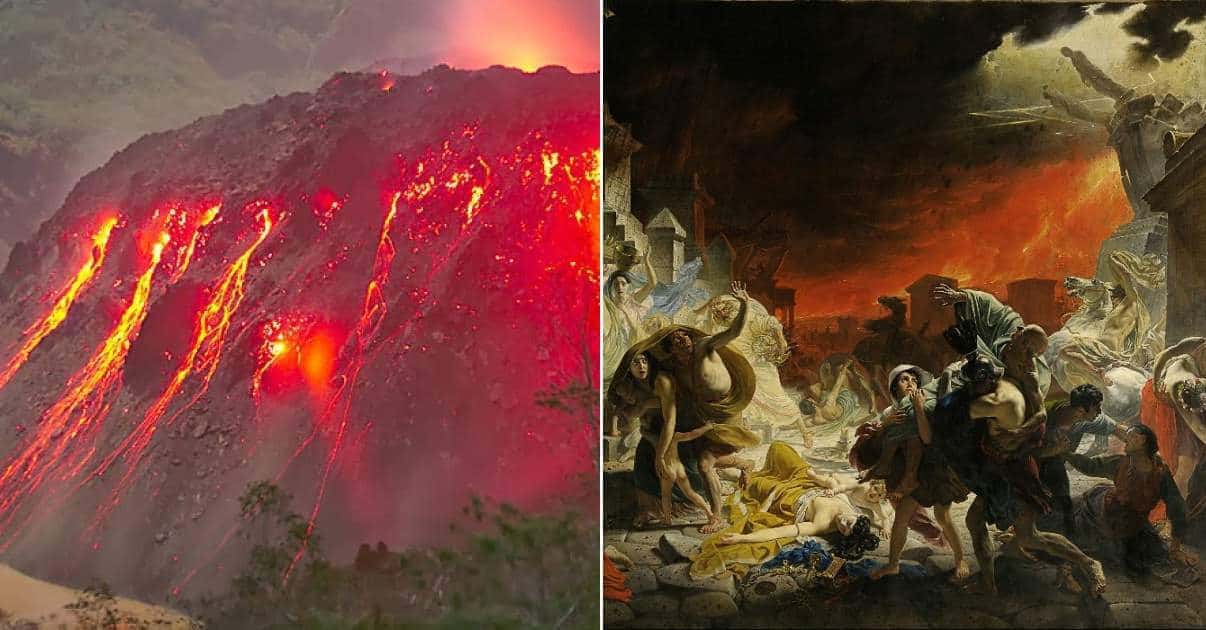Mother Nature is not always kind and nurturing. Indeed, sometimes our dear Mother Nature can suddenly morph into a real mean mother, turning bad in a heartbeat and setting out to do us in by the thousands, or even the millions. Nowhere is that seeming tendency to morph from kind, or at least indifferent, to psychotically destructive, more evident than in volcanoes. Most of them just sit there, quiet and inoffensive, looking little different from any other mountain. Then one day, out of the blue, KABOOM! That inert mountain goes off and dishes fire, death, and destruction all around.
Even the relative few that are known to be volcanoes, usually just rumble every now and then, belch a bit of smoke and steam, but otherwise do nothing particularly harmful. Kind of like a lazy old dog growling from time to time while lying down in the shade on a hot summer day, but showing little intent to lift its head up to bark, let alone to actually get up and bite anybody. Then, after lulling humans in their vicinity for years, or generations, the volcano suddenly turns super energetic and active, and goes from rumbles to massive eruptions that devastate the surroundings and kill tons of people. No wonder some ancients went out of their way to try and placate and appease the erratic volcano gods with rituals and sacrifices, including human sacrifices.

Following are ten of the most deadly, significant, and remarkable volcanic eruptions in history.

Mount Pelee Was the 20th Century’s Deadliest Volcanic Eruption
At the turn of the twentieth century, the charming city of Saint Pierre was the largest settlement in Martinique, outshining that French island’s capital city, Fort-de-France. Saint Pierre was Martinique’s economic center, with a busy harbor bustling with ships, offloading imports, and carrying off the island’s exports of rum and sugar to the rest of the world. Saint Pierre was also Martinique’s cultural center, known as “the Paris of the Caribbean”. However, the beautiful city had a major drawback: it was nestled beneath a massive volcano, Mount Pelee.
At 7:52AM on the morning of May 8th, 1902, the top of Mount Pelee blew up. A column of dense smoke shot skywards, forming a mushroom cloud that darkened the sky for about 50 miles. Another dense cloud of glowing black smoke shot horizontally, straight into Saint Pierre. The cloud consisted of superheated steam, gasses, ashes, and dust known as tephra, and it raced into Saint Pierre at a speed of nearly 420 miles per hour. All the town’s buildings were flattened, and the population was burned or suffocated to death. Offshore, a witness in a steamship described the city’s fate when the incandescent cloud hit: “The fire rolled down upon Saint Pierre. The town vanished before our eyes“.
The eruption killed about 28,000 people in Saint Pierre – the town’s entire population, except for one man: August Cyparis. A laborer and frequent troublemaker, Cyparis had gotten into a bar brawl on the night of May 7th, some hours before the eruption. He was thrown into jail overnight for assault, and ordered into solitary confinement. That was in a partially underground magazine with stone walls, which doubled as a cell. It had no windows, and its only ventilation was through tiny gratings on a door facing away from the volcano. In short, Cyparis’ solitary confinement cell was the most sheltered place in Saint Pierre. That saved his life.
When Pelee erupted, it grew very dark in Cyparis’ cell. A short while later, hot air and fine ash began entering his cell through the door’s gratings. He tried stopping it by wetting his clothes with urine and using them to stuff the gratings. That helped a little, but still, it got hot enough to cause deep burns on much of his body. Four days after the eruption, rescuers herd Cyparis’ cries amidst the rubble of the prison.
His miraculous survival garnered worldwide attention, and Cyparis got signed on by Barnum & Bailey to tour with its circus. His cell exists to this day, preserved in the rebuilt Saint Pierre. He was lucky, but many more were not. About 30,000 people were killed in Saint Pierre and surrounding region, in the 20th century’s deadliest volcanic eruption.

